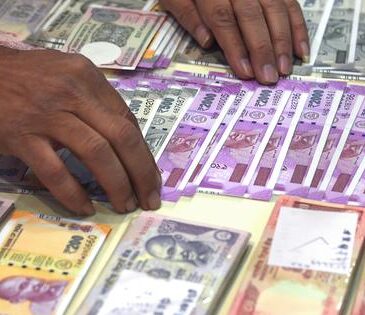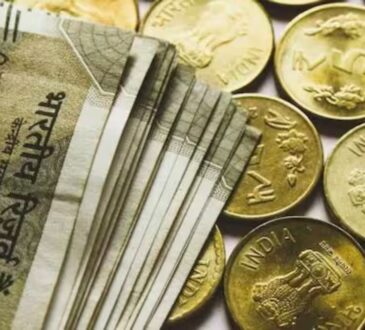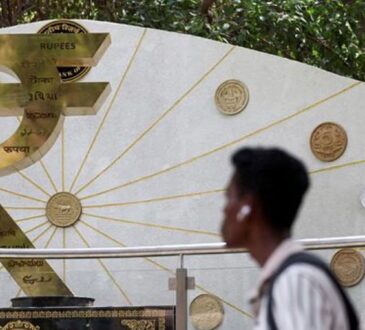This is an audio transcript of the FT News Briefing podcast episode: ‘Rio Tinto’s surprise CEO hunt’
Marc Filippino
Good morning from the Financial Times. Today is Wednesday, May 28th, and this is your FT News Briefing. US stocks came out the long weekend with some pep in their step. And Asian currencies are having a party of their own. Plus, Rio Tinto is on a surprise hunt for a new CEO. I’m Marc Filippino, and here’s the news you need to start your day.
[MUSIC PLAYING]
Investors on Wall Street got excited by some trade news yesterday. The S&P 500 ended the day up a little bit more than 2 per cent, and the Nasdaq rose by nearly 2.5 per cent. US stocks rallied after President Donald Trump said trade talks with the European Union were moving in a positive direction, and that the bloc had called to quickly establish meeting dates. Over the weekend, Trump agreed to delay 50 per cent tariffs on the EU until July 9th. European equities also got a bump from all this tariff news. The Stoxx 600 has risen 1.33 per cent this week.
[MUSIC PLAYING]
Asian currency seemed to be a winner in the global trade war. The Korean won, Japanese yen, and Taiwan dollar have all rallied in the past few weeks. Investors are betting that currency deals will be part of trade negotiations for the US. Here to explain is the FT’s William Sandlund. Hey, William.
William Sandlund
Hi, Marc.
Marc Filippino
William, tell me a little bit about what investors are betting on that’s causing these currencies to jump in value.
William Sandlund
So it seems to be that there are expectations that as these trade negotiations unfold with the US, one of the conditions will be less intervention from central banks into forex markets. We saw a pattern where whenever, let’s say Korea or Japan mentioned that they had been discussing exchange rates with the US, their currencies would rally. This is part of a kind of structural feature of the US and Asian exporters. A lot of these countries have huge FX reserves that they export a huge amount to the US, and a lot of those assets now are moving back to their home countries, either in the form of currency hedging or exporters repatriating assets. So there’s this wave of US dollars being converted back into home countries’ currencies. And then there seems to be a sense that central banks in the region are committed to allowing this appreciation to happen as part of trade negotiations.
Marc Filippino
And why do investors think that will happen, William? What have we actually seen so far?
William Sandlund
Well, what we’ve seen is these currencies appreciating in response to announcements that Korean officials or Japanese officials have been discussing exchange rates with their US counterparts. Strategists, analysts and investors are seeing this as a sign that the market is sort of pricing in this possibility of these negotiations. And on top of that, of course, there are these structural economic reality that a lot of these countries do have enormous US dollar reserves. And it seems as though there’s a pattern of repatriation and a rotation out of US assets as this US exceptionalism narrative comes to an end.
Marc Filippino
Just out of curiosity William, could these kind of currency deals with Taiwan, with Korea, with Japan, could they have a wider impact on the region?
William Sandlund
Yes, and I think the expectation is that it will spread to a couple of other countries in the region. Malaysia has come up as a candidate. The ringgit is up. In general, when the US dollar weakens, it’s very good for emerging markets for their equities in particular. So, it will make imports into these countries more affordable. It’ll help the consumption in these domestic economies. So, there are knock-on effects for the region that are, you know, significant for investors and that they’re watching if this trend continues.
Marc Filippino
That’s the FT’s William Sandlund. Thanks, William.
William Sandlund
Thank you.
[MUSIC PLAYING]
Marc Filippino
McKinsey has had a rough go of it recently. Sources say the American consulting firm cut 10 per cent of its staff over the past year and a half. These are some of the largest job cuts in the firm’s 100-year history, and it’s kind of a sign of the times for the sector. There’s been a sharp slowdown in revenue growth across the broader consulting market. Plus, there is the threat that artificial intelligence could automate tasks that are usually performed by junior employees. But then, there are some problems unique to McKinsey. The group was ordered to pay more than $1.5bn in legal settlements for its work with US opioid manufacturers.
[MUSIC PLAYING]
Rio Tinto asked its former CEO to step down last week. Jakob Stausholm led the world’s second-largest mining company for four and a half years. And sources say that he’s leaving sooner than expected. His departure is a big deal because Rio Tinto, A, doesn’t have a successor lined up. And B, the company has been dealing with inconsistent leadership for years. The FT’s natural resources editor, Leslie Hook, is here to tell me a little bit more about what’s next for Rio Tinto. Hey, Leslie.
Leslie Hook
Hi, Marc.
Marc Filippino
So why did Rio Tinto ask Stausholm to step down?
Leslie Hook
The company didn’t give a reason, and neither did Stausholm, but the way I think of it was a little bit like an amicable divorce. Tensions had been rising over time, they hadn’t really bubbled out into the open, but it came time when both parties decided to go their separate ways. And it’s worth remembering that Stausholm was brought in as kind of a caretaker CEO to restore Rio’s image, deal with some of the cultural problems that were identified at the company in the wake of a very controversial decision by Rio to blow up an Aboriginal site. So his predecessor was fired over this decision to blow up a sacred Aboriginal site in Australia. And Stausholm was brought in as this safe pair of hands to kind of lead the company with a new set of values and a new way of working, but he’s not really a mining guy. He didn’t have much mining background and the official line from people close to Rio Tinto is that it’s time for the company to have a more operational chief and to have someone who’s really a mining expert to focus on Rio’s operations.
Marc Filippino
Now, Leslie, you describe this as an amicable divorce, but what does it say about the company and Stausholm that Rio Tinto asked him to step down without a replacement lined up? It feels kind of weird that such a big company would go leaderless for a bit.
Leslie Hook
Well, technically Stausholm is still chief executive while his replacement is lined up. And I’m told that there’s some strong internal candidates for the role. Names I hear include Bold Baatar, who’s the chief commercial officer, Simon Trott, who’s the chief executive of Rio’s iron ore business, and Jérôme Pécresse, who’s the chief executive of its aluminium business. So I think there is a bench of contenders for this role and it seems like Stausholm’s departure came sooner than expected, probably sooner than he expected. And there’s gonna be a process of selecting one of these internal candidates now, and my understanding is that this is expected to wrap up by October if all things run according to plan.
Marc Filippino
Now Leslie, how did investors react to this announcement that Stausholm is stepping down?
Leslie Hook
I think investors were surprised, but the reaction was mixed. I think some thought maybe it is time for Stausholm to go, and the share price didn’t move that much on the news. Rio is heading into this kind of new period, and it’s also facing some big questions about its listing in London. The company is dual listed in London and Sydney. And it’s the subject of an activist campaign at the moment, which is trying to force the company to study the case for unifying its listing and moving its primary listing to Australia. So, that question of the listing structure is one that the next CEO is going to have to continue to take on.
Marc Filippino
And what does Stausholm’s departure mean for Rio Tinto’s business, anything?
Leslie Hook
Well, Rio Tinto, like a lot of mining companies, is at a bit of a transition point as it reorients itself toward the minerals that will be needed in the future, because they expect there’s gonna be a huge growing demand for copper as the world builds more electrical grids and electric vehicles. Now, Rio has also made a big bet on lithium. And that’s probably one of the things that Stausholm will be remembered for during his tenure. The company’s invested billions of dollars, nearly $10bn in lithium projects. It did a major lithium acquisition of Arcadium Lithium, and that’s quite different than what Rio’s rival mining companies have done. Now, lithium is a metal that is used in electric vehicle batteries, and supply is expected to increase, but there’s also already huge Chinese-owned production of lithium, and Rio’s gonna be going head-to-head with Chinese lithium producers in the future.
Marc Filippino
That’s the FT’s Leslie Hook. Thanks, Leslie.
Leslie Hook
Thanks, Marc.
Marc Filippino
You can read more on all these stories for free when you click the links in our show notes. This has been your daily FT News Briefing. Check back tomorrow for the latest business news.




